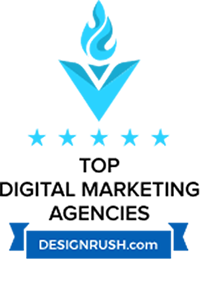Agencies often struggle with creating digital content consistently and at scale. Getting this right can really boost client engagement. But why does this matter? With the right approach, agencies can improve their services and make a strong impact.
Let’s look at some strategies to make your content creation process more efficient and help you succeed.
Understanding Digital Content Creation
Digital content creation is all about crafting things like blog posts, videos, and social media updates. It’s aimed at connecting with a specific audience. For agencies, nailing this is key because it’s how they communicate effectively with clients and audiences.
Getting content creation right helps build a strong brand presence. It also nurtures relationships. With a solid content strategy, agencies can align their content with their brand and create a message that resonates with their audience.
Choosing the Right Content Format
When picking the right content format, think about what your audience wants and needs. Here’s a look at some popular options:
- Blogs: Great for sharing detailed insights and industry updates. They work well for audiences who love in-depth analysis and informative content. When optimized with the right keywords, blogs can establish authority and drive organic traffic.
- Videos: Perfect for telling stories and showcasing products. They capture the attention of viewers on platforms like TikTok and YouTube. Videos are effective for demonstrating complex ideas or creativity quickly.
- Podcasts: Convenient for on-the-go listening. They’re great for exploring topics in detail through interviews and discussions. Agencies can reach people who prefer audio content during their commutes or while multitasking.
Each content type offers unique benefits suited to different client goals. For instance, a tech agency might use blog posts to explain complex software, while a lifestyle brand might choose vibrant videos to highlight their products.
Building an Effective Content Creation Process: 3 Big Steps You Should Master
1. Identifying Your Target Audience
Before you create content, it’s crucial to know your audience. Figuring out who you’re talking to can make or break your content’s impact. So, where should you begin?
- Start with a market analysis to understand basic demographics like age, gender, and location.
- Use surveys, interviews, and focus groups to learn about your audience’s preferences and behaviors.
- Check out social media analytics to see engagement patterns and refine your audience segmentation. This way, your content not only reaches the right people but also speaks their language, whether they’re sipping pop by Lake Michigan or enjoying local sports.
These steps are essential for any agency that wants to connect with customers and enhance engagement.
2. Generating Creative Content Ideas
Coming up with fresh content can be tricky. Many agencies face this challenge, but there are techniques to boost creativity. Try hosting regular brainstorming sessions where your team can share raw ideas in a judgment-free zone. This environment often leads to unexpected angles and creative sparks.
- Start by listing the main services or products your agency offers.
- Consider the problems these solve for your clients.
- Use these overarching topics to guide your search for relevant keywords.
Easy-to-follow hacks for you:
a. Using mind-mapping can also help visualize connections between topics, uncovering unique narratives for your agency’s voice and goals.
b. Encourage your team to keep an inspiration board for interesting articles, news, or cultural trends.
c. Watching social media trends is crucial too, as they inform timely topics that fit your strategy. Knowing what’s popular and relevant is vital for success in a crowded market.
3. Conducting In-Depth Keyword Research
To create content that truly connects with your audience, it’s important to understand the language they use. Keyword research lays the groundwork for planning your content creation process, especially if you’re an agency aiming to effectively meet client objectives. Here’s how to conduct this essential research.
Use Free Keyword Tools:
- Tools like Google Keyword Planner, AnswerThePublic, or Ubersuggest offer insights into popular search terms.
- Experiment with these tools to generate lists of potential keywords related to your topics.
Analyze Competitor Keywords:
- Check what keywords your competitors target using tools like SEMrush or Ahrefs. Even without paid features, you can spot strong keywords in competitors’ website texts.
- Reflect on how these keywords apply to your agency’s context and client goals.
Investigate Long-tail Keywords:
- Long-tail keywords, often less competitive and more specific, capture unique visitor intents.
- Integrate these for a nuanced approach to targeting content without exhausting your resources.
Evaluate Keyword Relevance and Volume:
- Focus on search volume, competition, and relevance to ensure strategic keyword choices. Balancing these factors to align with your goals and resources is key.
Monitor Keyword Trends:
- Google Trends or similar tools help track changes in keyword popularity over time.
- Staying updated allows you to adapt quickly to shifting interests or seasonal changes.
These steps will shape your planning process, leading to content that effectively attracts, engages, and converts. For any agency, refining your content creation process can be achieved without needing proprietary tools.
Best Practices for Agency Content Strategy
- Align Content with Business Goals:
Make sure each piece of content has a clear purpose. Whether it’s to educate or convert, it should connect to your agency’s core goals like boosting brand awareness or gaining new clients. - Monitor Market Trends:
Keep an eye on industry trends and consumer behavior. This helps you adapt quickly and ensures your content stays relevant. Use tools to track what’s happening in the industry and your competitors’ moves. - Prioritize Quality Over Quantity:
Quality beats quantity every time. High-quality content that resonates with your audience is more likely to gain traction and be shared, expanding your reach naturally. - Engage and Interact:
Use your content to connect directly with clients and audiences. Encourage feedback, respond to comments, and create interactive formats. Build a community around your brand through open conversations. - Measure and Optimize:
Keep track of how your content performs and tweak your strategies based on the data. Monitor key performance indicators and use insights to guide future content decisions.
Tips for Measuring and Improving Content Performance
For marketing agencies, evaluating content performance is key to optimizing strategies and achieving better client results. Tracking the right metrics and using analytical tools can guide you in making smart, data-driven decisions.
Key Performance Metrics
- Engagement Metrics:
Understanding audience connection through likes, shares, comments, and time spent on pages is vital. When these numbers rise, it means your content strikes a chord with readers. - Traffic Metrics:
Tracking visitors, page views, and unique visitors gives insight into your content’s reach. Google Analytics can show where visitors come from and how they find your content. - Conversion Metrics:
Metrics like click-through rates (CTR) and lead generation highlight how effective your content is at encouraging further engagement or actions.
Measurement Tools
- Google Analytics:
Helps you understand traffic, user behavior, and conversion patterns with detailed reports. - Ahrefs and SEMrush:
Offer insights into SEO performance and keyword tracking, vital for improving content visibility. - Social Media Analytics:
Tools like Facebook Insights and Instagram Analytics show how your content performs on social platforms, guiding content type choices.
Improvement Strategies
Once performance data is collected, use these insights to enhance your content strategy. Here’s how you can boost performance based on analysis:
- Refine Your Content Strategy:
Focus on topics and formats that resonate with your audience. Produce more of what works and try similar content styles. - Optimize for SEO:
Use keyword analysis to adjust content for better search rankings. Tweak headlines and meta descriptions to include impactful keywords. - Enhance User Experience:
Improve your site’s content layout, speed, and mobile responsiveness to keep visitors engaged longer.
- Test and Iterate:
Perform A/B testing on content formats, headlines, and calls to action. Iterative testing helps tailor content to audience preferences.
By consistently evaluating and improving your content, agencies can meet and exceed client expectations, driving higher engagement and meaningful results.
How Agencies Can Use Digital Content for Growth
Reflecting on our approach to building effective digital content strategies, it’s evident that agencies can use content as a key tool for growth. A strong digital content plan enhances your brand and boosts client engagement.
To build authority and trust, develop content that fits your agency’s strengths and highlights your expertise. Understand what your audience wants and how it ties into your objectives. Show your unique selling points and how you solve client challenges effectively.
We’ve covered essential elements like knowing your audience and tracking performance, which are important for success.
Frequently Asked Questions
What type of content works best?
The best content type depends on your audience and goals. Blogs offer detailed insights and improve your SEO. Videos are more engaging and suitable for storytelling, while podcasts are perfect for deeper discussions. Tailor your content strategy based on your audience’s preferences and your agency’s goals.
How often should agencies update their content?
Regular updates keep your content relevant and engaging. Aim to refresh blog content quarterly to stay current with trends and information. For social media, posting weekly helps maintain engagement. Monitor performance metrics to adjust your posting frequency as needed.




